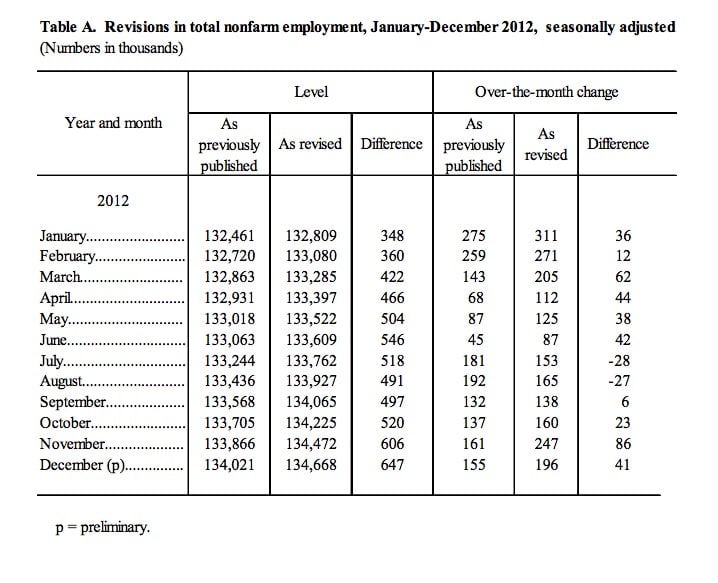How the US government missed the creation of 647,000 jobs last year
So, the jobs numbers were decent.


If you didn’t know a company existed, you wouldn’t think to put its number on a list of companies to call
So, the jobs numbers were decent.
But the real surprise seems to be coming from the Bureau of Labor Statistics’ revisions of past data, which show that 2012 was a much better year, jobs wise, than we knew.
So what’s the bottom line? Well, when we got the December job counts last month, the BLS said there were some 134,021,000 private and public sector jobs in the US. But today, the BLS is going with the number of 134,668,000 jobs at the end of December. That’s a difference of 647,000 jobs, or 54,000 jobs a month in 2012.

A lot of this has to do with annual tweaks to the BLS jobs methodology. For instance, the BLS count of total jobs is based on a BLS survey data of businesses—the so-called “establishment survey.”
The survey data is pretty good. But each year, the bureau likes to cross-check its survey estimates against hard counts that come out of unemployment insurance tax reports that nearly all employers are required to file. Incorporating the hard counts, the BLS now says the right benchmark level was 132,505,000 jobs as of the end of March 2012. That’s a difference of 424,000 from the government’s original claim that the US economy had 132.081 million jobs at the end of March 2012.
(As a side note, the jump higher in jobs data benchmark shouldn’t come as a complete surprise. Back in September the BLS said publicly that it would probably revise the March data up by around 386,000. It turns out the actual number was even higher.)
But wait, there’s more. The BLS also revised its payroll growth numbers for April-December 2012, by tweaking something known as the “birth-death” model, which is supposed to capture jobs created by new companies that might not show up in the establishment survey data. (If you didn’t know a company existed, you wouldn’t think to put its number on a list of companies to call.) The BLS first incorporates its hard counts of jobs from the unemployment insurance data into its birth-death model. Then it overlays that model onto the new, higher baseline job count for March 2012. The new, higher job counts also reflect changes to the way the BLS calculates seasonal adjustments. And for November and December data, it also incorporates changes to the new list of business it samples as part of the establishment survey.
And interestingly, the revisions at the end of 2012 were particularly large. November was revised up by 86,000 to a 247,000 gain on the month. And December was revised higher by 41,000 to 196,000. That suggests the US economy was going into the end of the year with a considerable amount more momentum than first thought, perhaps thanks to peppier small business creation.